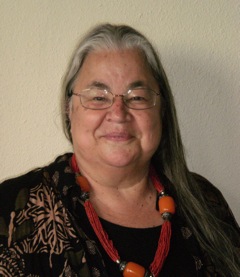 |
| Charlie Toledo, Executive Director |
Guest Blog Interview by Lisa Murgatroyd
Charlie Toledo Speaking at Harms Vineyards and Lavender Fields Open House on June 22: One Water
Part One of a Three Part Series
For more than 30 years, Charlie Toledo, Suscol Intertribal Council Executive Director, peace activist, community organizer, and healer, has been dedicated to preserving Native American culture and building the cohesiveness of indigenous groups in the Napa area. Current projects at Suscol Intertribal Council, a 501(c)3 organization, focus on inter-cultural healing between Native American populations indigenous to this area and the cultures currently inhabiting the Napa Valley. The organization also connects underserved local Native American populations to resources.
In the following abridged interview with Lisa Murgatroyd of Harms Vineyards and Lavender Fields, Charlie lends perspective on local Native American issues and cultural history in the Napa Valley. In describing the dynamic work of Suscol Council, she speaks about coming into sacred relationship with the land on a personal and a global level.
____________________________________________________________________________
Lisa: Tell me about the mission of Suscol Intertribal Council.
Charlie: When we began in 1992 our aim was to create a spiritual gathering place for native people, a place where they could have exclusive access and be safe to do ceremony. Even in 1992 it still wasn’t safe for native people to be gathering, especially in public, to do ceremony, to practice our way of praying. Now, in 2011, fortunately that’s changed a lot, and it is pretty safe, and we do our pow-wow. Though the initial mission was to create a spiritual gathering place, and that since has expanded to address the archeological concerns and then to bridge and establish contact with people who are wanting to access native cultures, belief, people. Also, in contracts and projects that are helpful to native people, we act as a bridge. Some of it’s political and economic, and a lot of it is spiritual – the basis of it is spiritual.
(Stay tuned for more on Suscol Intertribal Council projects and current issues in following blog posting: Part III)
Lisa: What was life like for the Mishewal Wappo people in the Napa Valley before they were forced from their homelands?
It was a cultivated wilderness, though the Europeans couldn’t see the cultivation. Now, the Department of Fish and Game and other groups are finally acknowledging that the area was indeed cultivated for the past 60,000 years, and now they’re scrambling to learn from Native American elders because of intense problems with erosion, wildfires, wildlife habitat, and more which these groups are now facing in Napa Valley area.
People from Napa would go to the coast and San Francisco for trade runs. To go running to the coast, you made a thirst-quenching, high protein necklace of manzanita berries, surely the first trail mix. There were trade runs from Alaska to the tip of Tierra del Fuego, and those trade runs were in place for 20,000 years. They operated like a race where you’d run and then pass the baton, but, instead, you traded goods at each stop. So, people would run and trade things, and, archeologists have found obsidian from the Napa Valley in Mexico and Macaw feathers from rainforest of South America in Alaska because of these routes.
Lisa: How did the Mishewal Wappo people live in relationship to the land and to nature?
Charlie: Indigenous people believe everything goes in a circle. The relationship to land and nature was one of balance. Native relationship to trees and animals were a sibling relationship. They were perceived as part of the same family. It is often perceived that the native people pray to the moon or to fire. It’s not like that; they pray with the moon and fire.
Prayer is a part of our daily life – waking each morning, lighting a small fire, giving thanks through the sun and fire for another day on this Earth, giving thanks to our ancestors for giving us life.
In the daytime we share the water and bless the water, and we ask the water to bless us, bless our heads so we can see where we’re going, bless our hands so that we have food on our journey, and bless our feet so that we remember that every day on this Earth is sacred. May our feet touch the Earth so that we give thanks for another opportunity to be on this Earth. Of course we always pray for the unborn children, the spirits that are traveling to the Earth, and we give thanks for the children that are here with us, and the ancestors that have come before us. This is all part of our daily prayer.
(Stay tuned for Part II and Part III of Charlie Toledo’s interview on sacred relationship with the land and current Suscol Intertribal Council projects in following blog posts )
____________________________________________________________________________
Suscol Intertribal Council: www.suscol.nativeweb.org. Charlie Toledo can be reached at suscol@suscol.net, (707) 256-3561.Volunteers and donations are gratefully accepted. Donations to help build Suscol House can be given by Pay Pal at www.suscol.nativeweb.org/donate.php or checks can be sent to Suscol Intertribal Council, PO Box 5386, Napa, CA 94581.